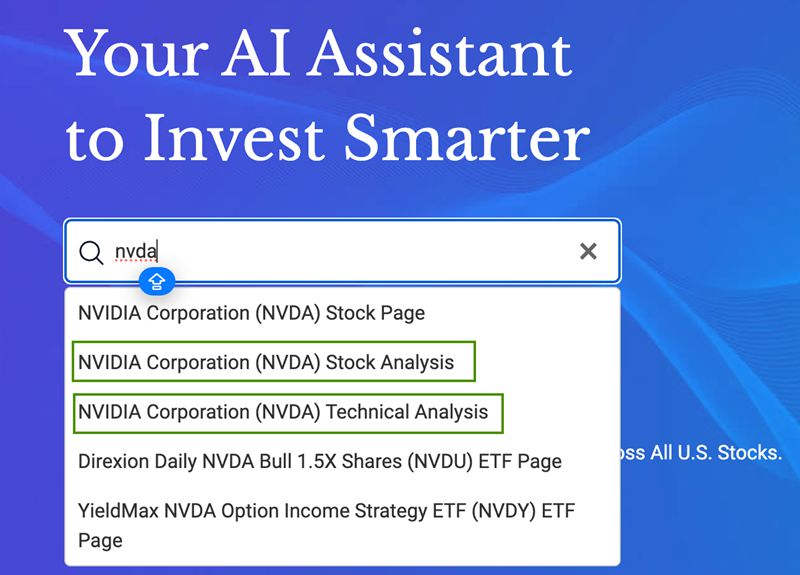Examining the AI predictive model for stock trading's inclusion of microeconomic and macroeconomic variables is crucial, as these variables influence the dynamics of markets and asset performance. Here are ten tips for evaluating how well the economic variables are included in the models:
1. Make sure to include the most important macroeconomic indicators.
Stock prices are heavily influenced by indicators like inflation, GDP, as well as interest rates.
How do you check the input data for the model to make sure that it has the right macroeconomic variables. A set of indicators that are comprehensive allows the model to respond to changes in economic conditions which affect assets of all types.
2. Utilize sector-specific indicators of microeconomics to evaluate the efficacy of your program
What are the reasons? Economic factors such as company earnings, debt level and industry-specific indicators can have a significant impact on stock price.
How do you confirm that the model is incorporating particular factors in the industry, like retail consumer spending or oil prices for energy stocks, to give more granularity and precision to predictions.
3. Assess the model's response to Changes in Monetary Policy
The reason: Central Bank policies, including rate cuts and hikes that can have a huge impact on the prices of assets.
How: Check if your model incorporates the changes in monetary policy and rate adjustments. Models that can adapt to these changes can better navigate market fluctuations driven by policy.
4. Study the Application of Lagging, Leading, and Coincident Indicators
The reason is that leading indexes (e.g. the stock market indexes) are able to predict the future trend. Indicators that trail them verify the predictions.
How do you ensure that the model includes the mix of leading, lagging, and lag indicators to provide a better understanding of the economic situation and its time. This can increase the predictive accuracy of the model in economic transitions.
Review Frequency of Updates and the Speed with which They Are Made
What's the reason? Economic conditions alter over time, and old data could lead to incorrect forecasts.
How: Ensure that the model's economic inputs have been regularly updated, especially when it comes to data which is frequently released, such as employment numbers and monthly manufacturing indices. Updated information helps the model better adapt to the current economic trends.
6. Verify the Integrity of Market Sentiment and News Data
Why: Market sentiment and investor reactions to news about the economy, can affect price fluctuations.
How: Look out for sentiment-related components, such as social media sentiment and news events impact scores. These qualitative data points assist the model in interpreting sentiments of investors, specifically regarding economic news releases.
7. Utilization of specific economic data for a particular country for international stock markets
The reason is that local economic conditions have an impact on performance for models that cover international stocks.
What to do: Find out whether non-domestic assets are part of the model. This will help to identify the distinct economic factors influencing international stocks.
8. Make sure you are aware of dynamic revisions and weighting of Economic Factors
What is the reason: The economic factors change over the years. For example inflation may cause more harm during periods with high inflation.
How: Ensure that the model is able to adjust the weights it assigns various economic indicators based on current conditions. The dynamic factor weighting improves the flexibility and reflects the relative importance for every indicator in real-time.
9. Assessing the Economic Scenario Analysis Capabilities
Why: Scenario analysis could show how the model reacts to economic events that might occur such as recessions or increases in interest rates.
What can you do to test if the model is able to create different economic scenarios and adjust predictions accordingly. Scenario evaluation helps to verify the reliability of a model over diverse macroeconomic environments.
10. Study the model's relationship with stock market predictions and economic cycles.
The reason: Stocks can be different in different economic cycles (e.g., recession, expansion).
How to analyze the model to determine whether it recognizes cycles and then adjusts. Predictors that can recognize and adapt to changes in the market, such as the preference for stocks that are defensive during recessions are usually more able to withstand the rigors of recession, and match market trends.
You can evaluate these factors to get a better understanding of the capability of an AI stock trading prediction system to combine both macro- and microeconomic variables, which can help increase the accuracy of its predictions and be able to adapt to various economic circumstances. See the most popular Dow Jones Today for website recommendations including ai and the stock market, ai ticker, stock market how to invest, best site for stock, chat gpt stocks, ai stock to buy, equity trading software, top ai companies to invest in, best ai companies to invest in, ai trading software and more.

Top 10 Tips For Evaluating A Stock Trading App That Uses Ai Technology
It is important to take into consideration various aspects when you evaluate an app which offers AI stock trading prediction. This will help ensure that the application is reliable, efficient and in line with your goals for investing. Here are 10 essential suggestions to assess such an app.
1. Evaluation of the AI Model Accuracy and Performance
Why: The AI stock trading predictor's accuracy is key to its effectiveness.
How to review the performance metrics of your past, such as accuracy rate, precision, and recall. Review the results of backtesting to see how the AI model performed in different market conditions.
2. Be aware of the data sources and the quality of their sources
What's the reason? AI model is only as precise as the data it is able to use.
How: Examine the data sources the application uses. This includes real-time market data or historical information as well as feeds for news. Verify that the app uses high-quality sources of data.
3. Evaluation of User Experience as well as Interface Design
What is the reason: A user-friendly interface is crucial in order to ensure usability, navigation and effectiveness of the site for new investors.
What: Take a look at the design, layout and overall experience of the application. Consider features such as simple navigation, user-friendly interfaces and compatibility with all platforms.
4. Make sure that you are transparent when using algorithms or predictions.
What's the reason? By understanding AI's predictive abilities We can increase our confidence in its suggestions.
Find the documentation which explains the algorithm, and the factors taken into account in making predictions. Transparent models can often increase confidence in the user.
5. Find Customization and Personalization Option
Why? Investors differ in their risk appetite and investment strategies.
How to: Look for an application that permits users to alter settings based upon your investment goals. Also, take into consideration whether the app is suitable for your risk tolerance and preferred way of investing. Personalization can improve the accuracy of AI predictions.
6. Review Risk Management Features
How the importance of risk management for capital protection when investing.
How to: Make sure that the application has tools to manage risk including stop loss orders, position sizing, and portfolio diversification. Check how these features integrate with the AI predictions.
7. Analyze the community and support features
The reason: Having access to community insight and customer support can improve the process of investing.
What to look for: Search for forums, discussion group and social trading elements in which users can share ideas. Check the responsiveness and accessibility of customer service.
8. Verify that you are Regulatory and Security Compliant. Features
Why? The app has to conform to all standards of regulation to operate legally and protect the interests of its users.
What can you do? Check the app's compliance with relevant financial regulations. Additionally, ensure that it has robust security features in place, like encryption.
9. Consider Educational Resources and Tools
Why? Educational resources will assist you in enhancing your investment knowledge.
How to: Search for educational materials such as tutorials or webinars to explain AI predictions and investing concepts.
10. Review User Reviews and Testimonials
What's the reason? App feedback from users can provide important information regarding the app's reliability, performance, and overall user experience.
Read user reviews on the app store and financial forums to understand the user experience. Find patterns in the reviews about the app's features, performance, and customer support.
These guidelines will assist you in evaluating the app that makes use of an AI stock trading prediction to make sure that it meets your needs and allows you to make educated stock market choices. Have a look at the top rated Nvidia stock for site advice including ai investment bot, website stock market, ai stock forecast, ai stocks to buy now, best stocks in ai, best site to analyse stocks, ai technology stocks, ai stock predictor, best artificial intelligence stocks, ai publicly traded companies and more.
